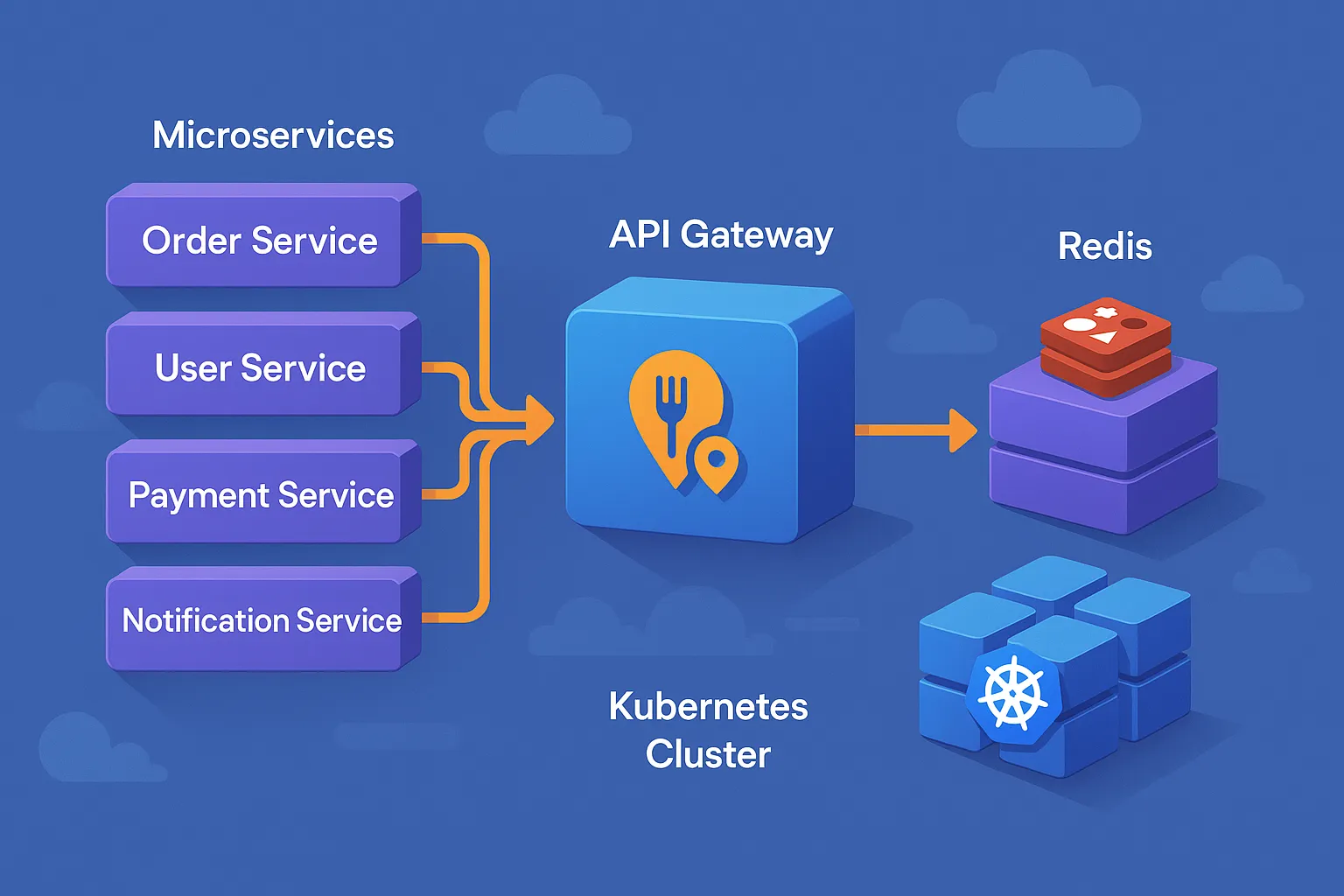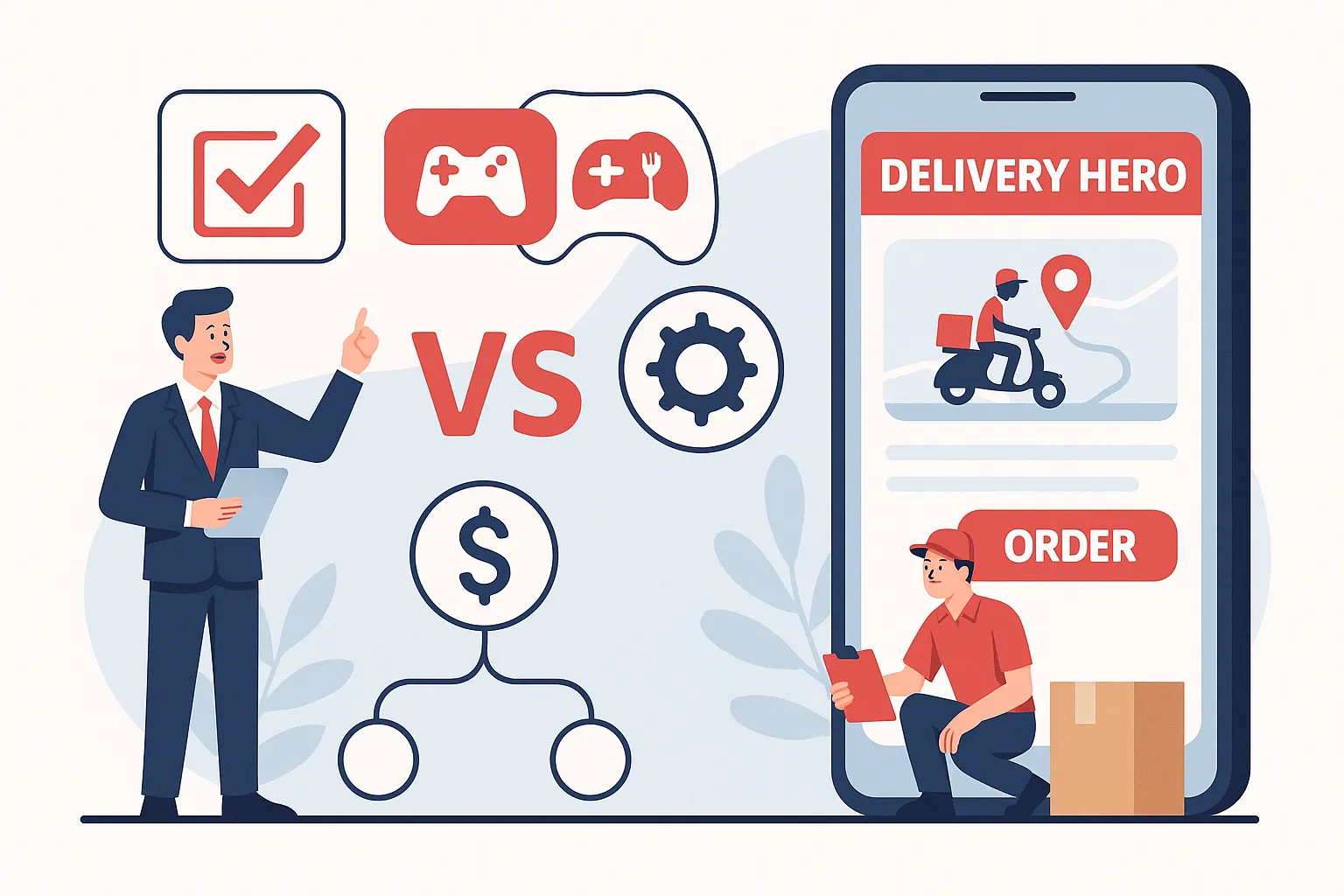The buzzing sound you keep hearing isn’t a swarm of drones (though give it time). It’s the collective rumble of hungry users tapping Order Now on their smartphones while investors salivate over recurring delivery fees. A decade ago, convincing someone to trust an app with tonight’s biryani felt exotic. In 2025, it’s table-stakes—and Delivery Hero, with its galaxy of brands like foodpanda, Talabat, and PedidosYa, has proven the model scales across continents.
If you’re a scrappy founder or a growth-obsessed product lead, you’ve probably done the napkin math: “Should we build our own stack from scratch or start with a battle-tested Delivery hero Clone?” Spoiler: that napkin’s about to get very greasy.
Today we’ll unpack the practical, dollars-and-sense reasons startups pick Miracuves’ over grinding through custom code. By the end, you’ll see how a clone isn’t a shortcut for the lazy—it’s high-octane fuel for founders who’d rather blitz the market than babysit boilerplate. Miracuves has helped dozens of teams pull off that trick, and here’s the play-by-play.
Read More : What is Delivery Hero App and How Does It Work?
The Appetite Is Massive—And Still Growing
Global appetite for tap-to-eat shows zero signs of indigestion. Multiple analysts peg the online food-delivery market north of $288 billion in 2024, on track for half-a-trillion by 2030. Meanwhile, Sensor Tower logs 7 million combined iOS + Android downloads across Delivery Hero-owned apps just last month.
For founders, those numbers translate to two truths:
1) consumer demand is entrenched, and 2) big incumbents have validated the blueprint—yet no single brand monopolizes every region. That leaves wide lanes for local champions armed with the right tech.
Budget Sanity: 60 % Less Up-Front Burn
Custom dev burns capital on three fronts:
- Specialist hires (DevOps, AI-based ETA, dispatch algos)
- Feature parity creep (“We can’t ship without wallet top-ups!”).
- Technical debt from v1 shortcuts that haunt v3.
Our clone’s unified codebase amortizes that R&D across clients, slashing initial cap-ex by roughly $250k–$400k for a mid-tier geography. That leftover cash can bankroll rider subsidies or hyper-local billboard stunts instead of developer overtime.
Built-In Growth Levers From Day One
Delivery Hero clone didn’t scale to €12.3 billion in annual revenue (FY 2024) by luck Their secret sauce—multi-restaurant baskets, surge discounts, and AI-priced delivery fees—is baked into Miracuves’ clone:
- Smart Promotions: rule-based coupon engine that auto-ramps during off-peak slots.
- Subscription Layer: clone supports Pro memberships (free delivery + priority support).
- In-App Ads: merchants pay to boost visibility, unlocking a high-margin revenue stream.
Because these levers are turnkey, you start monetizing on Day 1 rather than sprinting to release “phase-two” features months later.
Battle-Tested Tech: Scale Without Meltdowns
Behind every piping-hot pad-thai is a cold, ruthless microservice that juggles orders by the millisecond. Miracuves’ clone mirrors Delivery Hero’s cloud-native philosophy—containerized services, autoscaling, and separate read/write DBs so peak dinner rush doesn’t crater the feed.
Remember those €48.8 billion in GMV Delivery Hero clone processed in 2024 The architectural patterns that made that possible power your clone, minus the procurement headaches. Translation: sleep, glorious sleep, during festival weekends.

Compliance and Safety Nets—Handled
Data-privacy acronyms (GDPR, DPDP, LGPD) read like alphabet soup, but regulators chow down on violators. The clone ships with:
- Role-based access control
- Encrypted PII at rest + TLS in transit
- Audit logs ready for SOC 2 or ISO scrutiny
For payments, we pre-integrate PCI-compliant gateways and country-specific wallets (UPI, PayNow, GrabPay). Legal serenity beats six-figure fines any day.
Stand Out With Brand-First UX
“Clone” isn’t code for cookie-cutter. You can customize color palettes, iconography, even mascot-style micro-animations without touching core logic. Think of it as skin-swapping in Fortnite—same engine, unique swagger.
Need region-specific additions like cash-on-delivery toggles or group-ordering for office lunches? Modular plug-ins drop in cleanly, sidestepping Frankenstein codebases.
Continuous Upgrades—Minus the Surprise Bills
Food-delivery UX trends shift faster than TikTok dances. Miracuves pushes quarterly improvements—voice ordering, dark-mode refinements, even drone-friendly drop-off coordinates—through an LTS branch. Because updates are shared, you’re not footing 100 % of the dev bill.
Read More : Best Delivery Hero Clone Scripts in 2025: Features & Pricing Compared
A Community of Plugins, Couriers, and Consultants
Building on a popular clone means tapping into an ecosystem:
- Courier on-boarding apps (KYC + gamified training)
- Restaurant POS connectors (Square, Toast, Petpooja)
- Analytics dashboards spitting cohort LTV and churn curves
The network effect reduces vendor lock-in and accelerates feature velocity—exactly why Delivery Hero keeps scooping up regional players instead of reinventing wheels.
Conclusion :
Speed, savings, scalability—Miracuves’ Delivery Hero clone hits the startup trifecta. While incumbents wrestle with antitrust headlines and billion-euro write-downs, you can quietly capture neighborhoods, then cities, with software that’s already proven its mettle.
At Miracuves, we help innovators launch high-performance app clones that are fast, scalable, and monetization-ready. Ready to turn your idea into reality? Let’s build together.
FAQs:
1. Does “clone” mean my app will look identical to Delivery Hero?
Not at all. The underlying mechanics are similar, but you can reskin layouts, rename flows, and add exclusive features so users see your brand—not a copycat.
2. How secure is the clone with sensitive payment data?
The platform is PCI-DSS–ready out of the box. Card numbers are tokenized, and we enforce TLS 1.3 across all endpoints.
3. Can I integrate local payment methods like UPI or M-Pesa?
Yes. Our gateway layer is modular. We’ve integrated UPI, Paytm, Razorpay, M-Pesa, and more for past clients.
4. What about AI features like ETA prediction?
Machine-learning micro-services feed on historical delivery routes and traffic APIs to predict arrival times. These services are pre-wired; you only need to supply local data.
5. How do upgrades work once I’m live?
Miracuves maintains a long-term support branch. You get quarterly feature packs and critical patches with no extra license fees.
6. Will investors value my company less if I use a clone?
Investors care about traction and margins, not heroic code feats. Using a clone to validate market fit faster often improves your valuation because you hit KPIs sooner.
Related Articles :








